Stuck in the mud: reviving the fortunes of Thu Thiem
Last April, after three years of construction and a further four-year delay, Thu Thiem 2 Bridge was finally opened to traffic, connecting a major District 1 intersection to Vong Cung Boulevard in Thu Thiem New Urban Area over the Saigon River.
Almost immediately, and somewhat inevitably, the long-awaited event was beset with unfortunate press coverage when thieves stole dozens of manhole covers from the brand-new bridge.
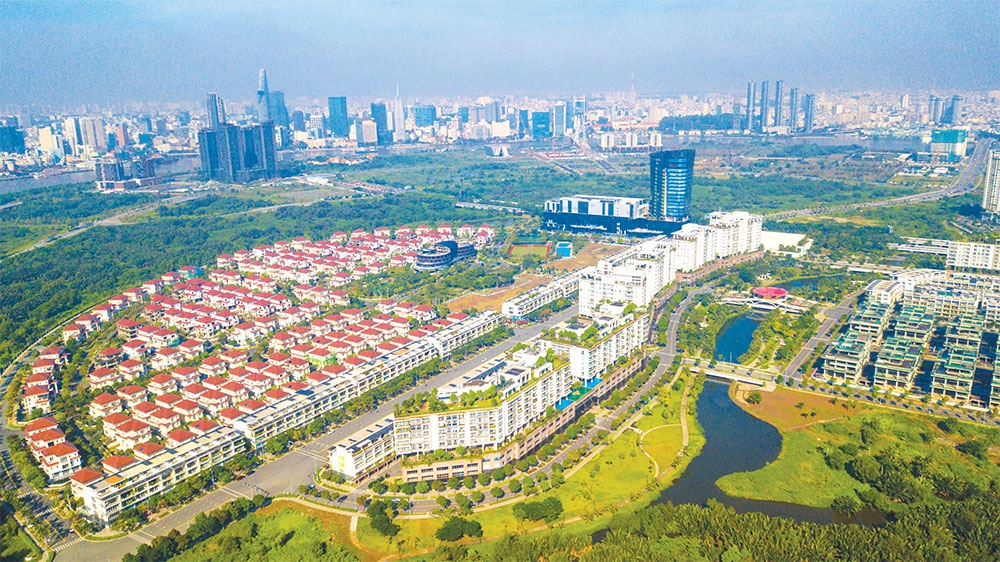 |
| Admin procedures for funding licences have delayed the building of basic infrastructure in Thu Thiem, photo Le Toan |
The story put another negative spin on events surrounding Thu Thiem, which from inception carried the expectation of becoming the leading financial centre in the region. Planned to not only become a new central business district, it would transform Ho Chi Minh City into a major financial centre competing with Singapore, Hong Kong, or Seoul.
But with works continuing to stall in the area, the dream of a fully functioning Thu Thiem is still in the long grass.
According to the Global Financial Centre Index’s (GFCI) ranking of financial centres last year, Ho Chi Minh City dropped two places to 104 out of 119 cities evaluated. In the rankings, Singapore surpassed Hong Kong to rise to third worldwide, and even China saw a big jump when Shanghai, Beijing, and Shenzhen all entered the top 10.
In terms of Southeast Asia, Ho Chi Minh City remains behind other financial centres such as Manila, Bangkok, and Kuala Lumpur. The factors in the GFCI analysis model are grouped into five main competitive areas – business environment, human resources, infrastructure, financial development, and reputation. The scores of all five components for Ho Chi Minh City are currently relatively low.
A history of issues
Thu Thiem’s initial development orientation was to become a new financial centre of economic groups and at the same time a vibrant destination combining residential areas, offices, and shopping centres with hotels, residential areas, and serviced apartments.
However, most of the projects built in Thu Thiem thus far are housing projects. Meanwhile, complex commercial projects are limited, with only The Hallmark and The MEIT from SonKim Land office buildings and Thiso Mall from THACO opened as of the end of last year.
According to JLL Vietnam, one of the reasons for the shortage of commercial facilities is that investors in Vietnam prefer to develop projects that involve short-term investment recovery, such as apartments, while commercial ventures require high professional management capacity, slow capital recover, and must maintain profits for a long time.
This long-term situation has made Thu Thiem urban area a purely residential urban area thus far, lacking a balance of development between living and work, culture, and people’s lifestyle.
“A harmonious urban area will create conditions for residents of all classes to meet and interact to create values of employment, services, products, and social values, leading to a surplus for the economy instead of just creating real estate value. Therefore, the lack of synchronised infrastructure will limit attraction,” said Trang Le, senior director at JLL Vietnam.
The residential land price hikes and lack of important facilities could cause a real estate bubble and unsustainable development, according to Le.
Thu Thiem was expected to attract many multinational corporations, headquarters of global banks, credit institutions, and investment funds. However, the promotion policies of the two main urban areas still have many differences, leading to delays in overall development.
However, the main delays mainly stem from slow site clearance compensation and infrastructure construction, especially in connection with surrounding areas.
It took a decade for Thu Thiem to complete basic compensation for 99 per cent of the available land, but in the years since, difficulties in carrying out administrative procedures for investment licences have further delayed the speed of simple infrastructure construction compared to the expected progress.
In addition, besides projects that have been and are being implemented, Thu Thiem New Urban Area in particular still has a number of land lots that have not been allocated for development.
In 2021, Ho Chi Minh City Property Auction Service Centre held an auction of four land lots in functional area 3, but an eventual rejection of moving forward by the winners rejected has left even more uncertainty.
Local authority push
Developing Thu Thiem is one of the major tasks for Ho Chi Minh City authorities. The target was once again confirmed at the city’s Party Committee Conference for the 2020-2025 period, where it was noted that a resolution on completing Thu Thiem New Urban Area before 2030 was approved.
“The resolution was born in the context that the area has been planned and implemented with many important and breakthrough results in promoting potential and resources to develop Ho Chi Minh City into an economic hub for the region,” said Secretary of Ho Chi Minh City Party Committee Nguyen Van Nen.
However, the implementation process still has many inadequacies and shortcomings, giving rise to prolonged complaints and causing frustration among citizens.
“The goal is to focus on overcoming all shortcomings and violations, while continuing to mobilise resources to complete the construction of Thu Thiem New Urban Area in accordance with the set targets and progress,” Nen added.
Evaluating the planning, Le Quoc Binh, general director of Ho Chi Minh City Infrastructure Investment, a company with nine projects in the city, said that in terms of urban beauty, Thu Thiem is superior to all other urban areas in the country and Southeast Asia in general. “With the careful planning of Thu Thiem and strict management in terms of architectural design, construction, and population density, new projects in Thu Thiem will comply with standards that can attract buyers and residents to move here to live,” Binh said.
Neil MacGregor, managing director of Savills Vietnam added, “With a series of important infrastructure projects that have been put into operation and can be systematically completed soon, we can expect the rapid development of Thu Thiem. I believe that in the coming time, this area will contribute a lot to the budget and the overall development of the city.”
According to the approved investment plan, Thu Thiem will receive a variety of projects such as nearly 400,000 square metres of Grade A office space, 138,000sq.m of commercial floor, and various 5-star hotels.
“In the context that the occupancy rate of office buildings in District 1 is historically high and new supply is limited, many tenants will take the opportunity to move to Thu Thiem. This will become a synergy to help Ho Chi Minh City continue to attract leading international companies wishing to invest in Vietnam,” MacGregor cited.
As noted by Savills, since the first real estate projects were launched in 2015, the Thu Thiem area market has seen more than 10,000 high-end and luxury housing products built so far. From an investment perspective, MacGregor said that many investors early on quickly saw the potential for residential and commercial development there.
Thus, Thu Thiem has attracted some of the best developers in Vietnam and Asia-Pacific, including Keppel Land, Lotte, GS E&C, Swire, Gaw Capital, Refico, and SonKim Land. With the scarcity of land for project development in Ho Chi Minh City at this time, development opportunities in Thu Thiem will become more and more attractive, according to MacGregor.
“This area will eventually be home to the market’s best Grade-A office buildings as well as the highest-priced luxury apartments in Ho Chi Minh City,” he said. “Along with that, Thu Thiem will also be boosted by the vibrant retail and food and beverage (F&B) sector, thereby attracting leading luxury retail brands and new F&B models in Southeast Asia.”
| Thu Thiem New Urban Area has a total area of 657 hectares surrounded by the Saigon River and is located opposite District 1, Ho Chi Minh City. Thu Thiem is planned with the main functions of being a financial, commercial, and high-class service centre of the city and will be one of the areas with the most vibrant economic and entertainment activities in Southeast Asia. With the peninsula’s topography, Thu Thiem’s transport infrastructure projects have been focused on investment for many years. Thu Thiem and District 2 are also the gateways of Ho Chi Minh City to the east, helping to connect with Dong Nai, Binh Duong, Ba Ria-Vung Tau, and the northern region. When Long Thanh International Airport comes into operation, District 2 will be an important gateway connecting the airport with the city centre. |
What the stars mean:
★ Poor ★ ★ Promising ★★★ Good ★★★★ Very good ★★★★★ Exceptional
Related Contents
Latest News
More News
- Sun Group breaks ground on $2 billion Van Don casino complex (December 19, 2025 | 18:14)
- Rare, beautiful, sustainable: the mark of iconic real estate (December 19, 2025 | 08:00)
- Owner-occupied housing stabilises, paving the way for new growth cycle (December 18, 2025 | 17:04)
- Unlocking urban potential of smart cities (December 18, 2025 | 16:50)
- Green finance offers 'passport' for Vietnamese construction, building materials firms (December 15, 2025 | 08:00)
- Gamuda Land commit long-term investment (December 12, 2025 | 11:49)
- HITC ties up with Evolution to develop AI and hyperscale data centres in Vietnam (December 11, 2025 | 12:09)
- Real estate deals boom via high-profile names (December 08, 2025 | 11:32)
- Industrial segment shaped by M&As (December 08, 2025 | 08:00)
- The Privé sets the benchmark for luxury real estate (December 05, 2025 | 08:28)


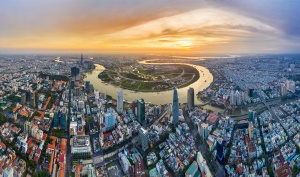
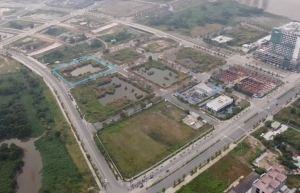
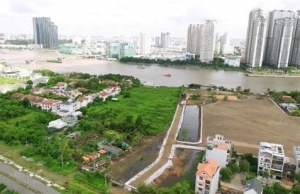
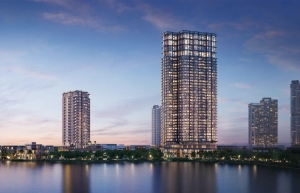
 Tag:
Tag:




















 Mobile Version
Mobile Version